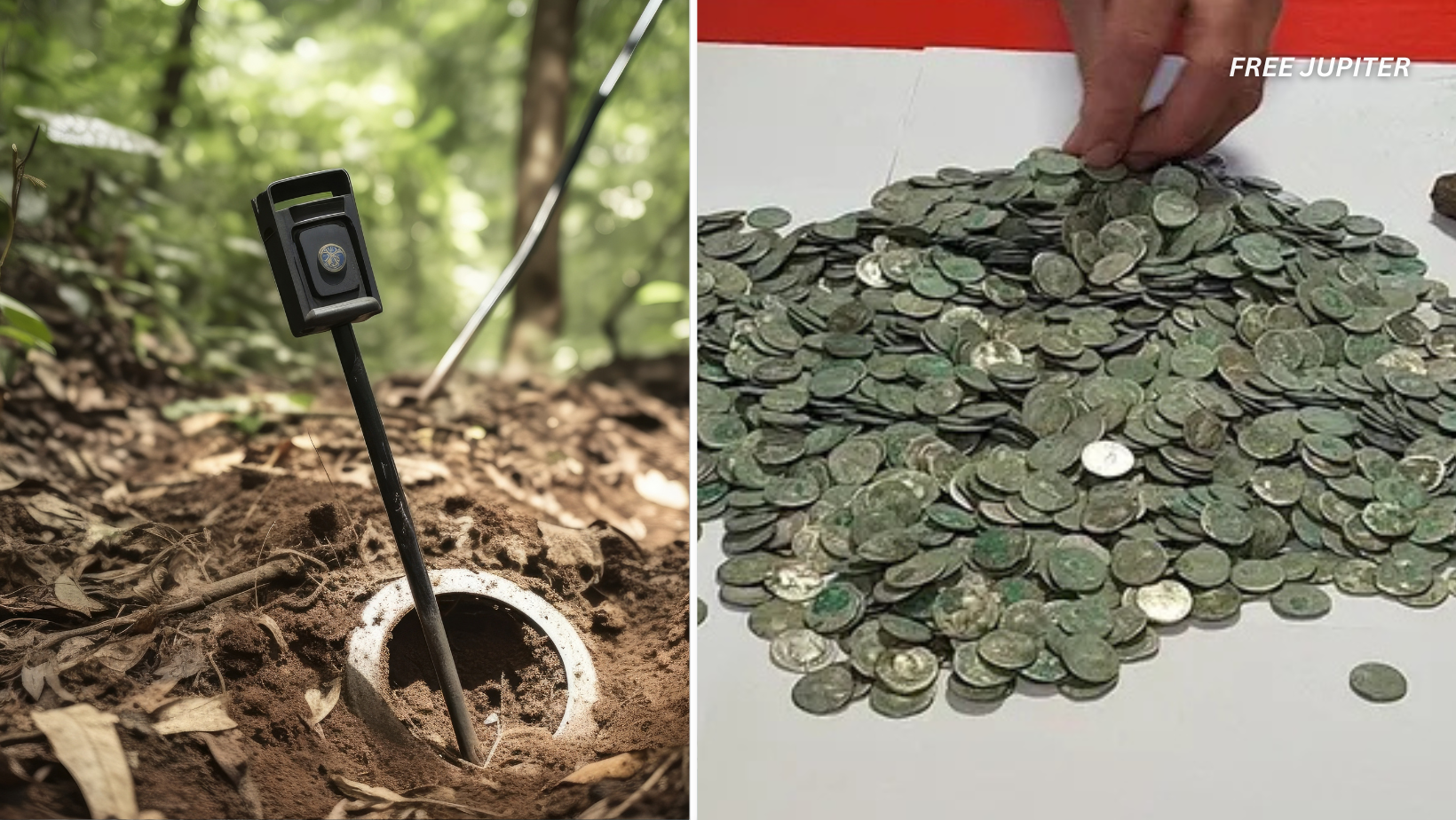Friendly Note: FreeJupiter.com shares general info for curious minds 🌟 Please fact-check all claims—and always check health matters with a professional 💙
On a calm spring day in southern Romania, what began as a simple nature walk quickly transformed into an extraordinary archaeological event. Marius Mangeac, a devoted metal detector enthusiast, set out alone near the small village of Letca Veche, seeking the familiar comfort of fresh air and gentle exercise. Little did he know that beneath the soil lay a treasure that would connect him directly to a civilization from two thousand years ago.
A Day Like Any Other – Until It Wasn’t
Marius often spends his weekends exploring fields and forests with his metal detector, a hobby that combines physical activity with the thrill of discovery. On this particular Saturday, the weather was pleasant, and the landscape peaceful. As he later shared in a social media post translated from Romanian, he had no inkling that the day would end with a startling revelation. “I took my detector and went out alone, as I often do, for exercise and to relax in the fields and forests,” he wrote. “I didn’t think this day would surprise me and bring me face to face with history.”
That surprise came suddenly when his detector began emitting a series of rapid beeps. Curious and excited, Marius began to dig and soon uncovered a sizable hoard of coins – 1,469 silver pieces dating back to Ancient Rome.
The Treasure Revealed: Roman Silver Denarii
The coins Marius found are known as denarii, silver currency that was widely used throughout the Roman Empire. Each coin bore the images of emperors and empresses from Rome’s storied past, including figures such as Vespasian, Trajan, Hadrian, and Marcus Aurelius. These portraits were more than mere decoration; they served as a form of imperial propaganda, reinforcing the power and reach of Rome across its vast territories.
The sheer number of coins in this hoard is remarkable. To stumble upon nearly one and a half thousand silver denarii in one spot is a rare event, offering a window into the economic and political history of the region. Marius estimated the coins to be at least 2,000 years old, placing them in a period when the Roman Empire was expanding its influence into the lands inhabited by the Dacians.
Read more: 4,000-Year-Old Tomb Found With Massive ‘Fake Door’ That Leads to Nothing
The Historical Context: Romans and Dacians
This region of Romania is steeped in history, particularly the complex relationship between the Romans and the Dacians. The Dacians were a fierce and proud people who resisted Roman conquest in the early second century A.D. Despite their valiant efforts, they were eventually absorbed into the Roman Empire after a series of wars.
The coins likely belonged to a wealthy Roman or someone closely connected to the empire’s administration or military presence in the area. Their presence here suggests the extent to which Roman culture and economy penetrated into what was once Dacian territory.
A Careful Process: Documenting and Preserving the Find
After uncovering the hoard, Marius dedicated two full days to meticulously photographing each coin. This careful documentation is essential for preserving the historical record and ensuring that scholars can study the find in detail. Once this task was complete, he handed over the entire collection to the local authorities at the town hall in Letca Nouă.
This responsible action ensures that the treasure will be protected, studied, and potentially displayed for public education and appreciation. It also aligns with legal and ethical standards regarding archaeological discoveries, which help prevent looting and illicit sales.
The Local Significance and Community Pride
The mayor of Letca Veche expressed pride in the discovery, noting that the area has a rich historical heritage. The region has yielded other significant artifacts in the past, including a religious icon found about ten years ago that was said to bear mysterious tear-like marks beneath its eyes. Such discoveries contribute to a deeper understanding of the cultural and spiritual life of past inhabitants.
Marius hopes that one day he can visit a museum with his child to share the story of this extraordinary find. His discovery not only enriches local history but also offers a personal legacy that connects past and future generations.
Read more: Archaeologists Are Too Scared To Open The Tomb Of China’s First Emperor
The Broader Archaeological Landscape in Romania
This find is part of a broader pattern of recent archaeological discoveries in Romania. Just recently, two other metal detector enthusiasts uncovered artifacts linked to the Dacians in the Transylvanian commune of Breaza. These parallel finds highlight the region’s layered history and the ongoing uncovering of its ancient past.
Romania’s landscape is a rich tapestry of historical periods, from prehistoric times through the Roman era and beyond. Each new discovery adds pieces to the puzzle, helping historians and archaeologists better understand the complex interactions between different peoples and cultures.
Valuing the Past: Cultural and Monetary Worth
While the precise monetary value of Marius’s coin hoard has not been officially appraised, similar Roman silver denarii typically sell for between 1,500 and 4,000 Indian Rupees each in collector markets. This suggests that the entire collection could be worth upwards of 5 million Rupees, underscoring the find’s considerable financial as well as cultural significance.
However, the true value of such a discovery lies not just in its market price but in its contribution to historical knowledge and cultural heritage. Each coin tells a story about the people who used it, the rulers who issued it, and the society that circulated it.
Read more: Historians Shocked As Hidden Artwork Found Underneath Renaissance Painting
Reflections on Discovery: A Personal and Historical Connection
Marius’s experience is a vivid reminder that history often lies just beneath our feet, waiting to be uncovered by those with curiosity and patience. His story is one of serendipity, careful stewardship, and a deep respect for the past.
What began as a quiet day in the Romanian countryside became a profound encounter with history. Through his discovery, Marius Mangeac has added a new chapter to the story of human civilization, one silver coin at a time. His find enriches not only the cultural fabric of Romania but also invites us all to consider the stories hidden in the soil beneath us, waiting to be rediscovered.
This remarkable episode illustrates the enduring allure of the past and the power of chance to connect us with ancient worlds. It reminds us that sometimes, the most extraordinary moments come when we least expect them-on a peaceful walk, in the quiet fields of a small village, face to face with history itself.










